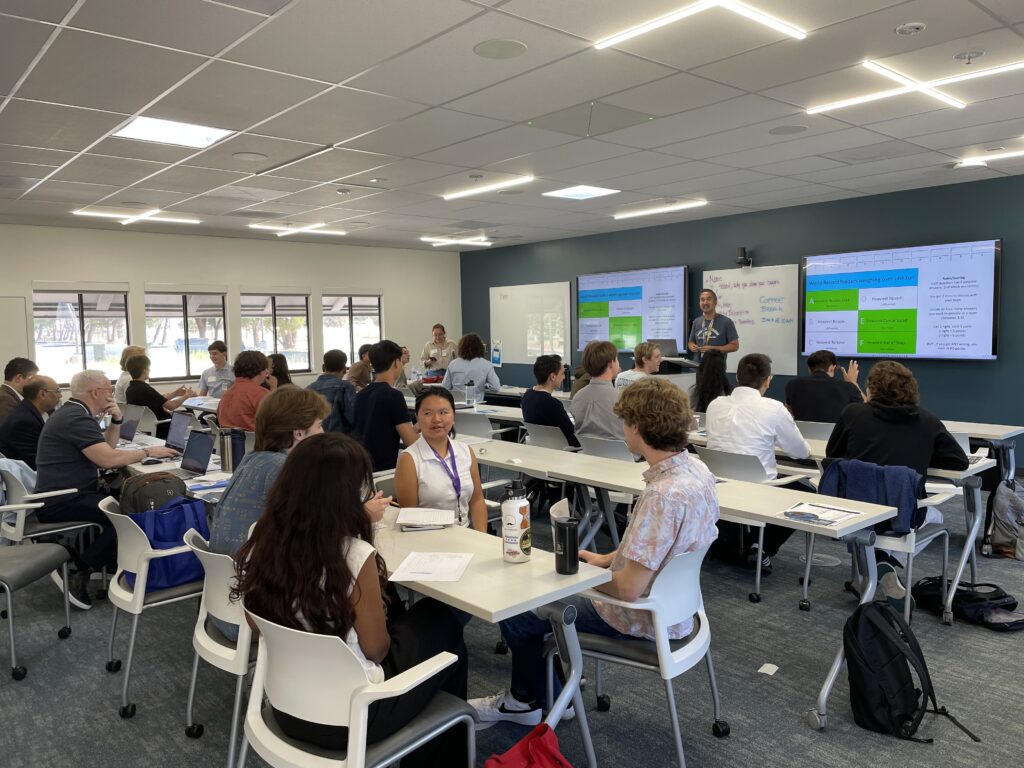
By Caroline Liu (UCLCC Communications Intern 2025)
UCLCC Successfully Pilots HEDS Summer School to Meet a Growing and Critical Need
This August, the University of California Livermore Collaboration Center (UCLCC) launched a High Energy Density Science (HEDS) Summer School aimed at encouraging the next generation of scientists to pursue degrees and careers in this emerging and important discipline.
HEDS – the study of matter under extreme conditions of high pressure, temperature, and energy density, such as those found in stars and planets – is essential for fields that are critical to the country’s future and security, such as clean energy, astrophysics and material science. Since 2022, when Lawrence Livermore National Laboratory (LLNL) became the first facility to achieve fusion ignition, the demand for a talented HEDS workforce has dramatically amped up. Yet HEDS remains underrepresented in academia and relatively unknown to many talented young scientists.
The UCLCC summer school sought to address those concerns by introducing undergraduates from across the UCs to HEDS-related fields. A high-powered collaboration among UC campuses and LLNL allowed the program to successfully expose students to current research and experimental facilities at LLNL, offer tips for applying to graduate school, and facilitate networking with UC professors, LLNL scientists, and fellow students.
A Comprehensive Introduction to the Field
Over the course of one week, 24 undergraduates and post baccalaureates from UC Berkeley, UC Irvine, UC Los Angeles, UC Merced, UC Santa Barbara, UC Santa Cruz and UC San Diego participated in lectures, hands-on learning activities and small group discussions. The HEDS-related topics – taught by experts from UC and LLNL – ranged from shock and plasma physics to laboratory astrophysics and planetary science.
Those sessions also offered a chance for students to interact closely with HEDS scientists, a rare and fulfilling experience. “I did not have much exposure to this many scientists before,” said Anushka Rajasekhar, a junior at UC Berkeley. “Talking to scientists made me understand my career path.”
To that end, the students also participated in professional development workshops that included tips on resume writing and discussions about careers at the national labs. Many also attended tours at LLNL and even had time for self-organized social activities, such as rock climbing.
A Powerful Collaborative Effort
The program demonstrates the power of growing collaborations among the UC campuses and the national labs. Federica Coppari, Ph.D., from LLNL, Camille Bibeau, Ph.D., from UC Office of the President, Franklin Dollar, Ph.D., from UC Irvine, David Stubbe, Ph.D., from UC Merced and Farhat Beg, Ph.D., from UC San Diego led the effort.
Christopher Zhen, an incoming junior at UC San Diego believes, “the HEDS Summer School program has opened multiple pathways in exploration of plasmas, lasers and fusion. I greatly appreciate the speakers I’ve listened to, the facilities I’ve toured, the knowledge and connections I have made here.”
He also appreciated the opportunities to connect with UC students from different campuses interested in the same field, adding, “I have made such good friends here and it was overall a great experience.”
As the importance of programs and careers in HEDS continues to grow, filling the pipeline with brilliant young scientists will be essential. The HEDS Summer School offers one exciting example of just how that work can get done.

